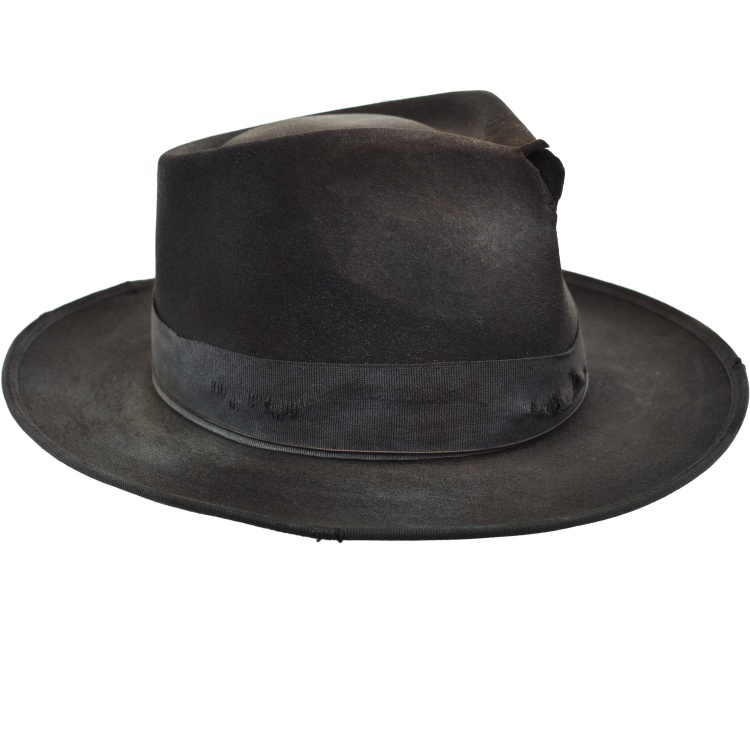By Rabbi Yair Hoffman for 5tjt.com
It is a sad story perhaps, but one that must be pointed out because it will be repeated time and time again. We must teach our children halacha, of that there is no question. But we must also teach the halachos of chessed and v’ahavta larayacha kamocha. These two obligatory topics are of great urgency to teach. The implication of these two obligations is that we must also teach the parameters of the halacha.
IDEAL HALACHA VS. CHESSED OPTION
Often, the situation will arise where we will have a choice of two options – the ideal halacha option versus the chessed and v’ahavta larayacha kamocha option.
There is a third thing to point out, however, and that is that very often the halacha is that the we must choose the chessed option over the ideal halacha option.
THE CASE IN POINT
A person was in Aveilus (it happens to be that the person was rather well-to-do, but this is irrelevant to the facts of the story). And he needed to daven at the amud. There was one minyan left in town, and that minyan had two requirements: The one davening at the amud had to wear both a gartel and a hat. The person arrived sans gartel and sans hat. The gartel part was no problem, as the shul provided one. But as far as the hat requirement, there was only one hat available which was situated at the top of a coat rack. The hat, however, was both dusty and dirty, aside from being grossly misshapen. Indeed, it had so many layers of dust on it that by any fair estimation, it would have taken twenty minutes or so to even make it an object of utility.
Time was ticking. The man decided to approach a young man who was also davening at the minyan if he could possibly borrow his hat because he was in mourning and that he needed to fill the requirement of the shul in order to lead the tefillah.
The young man with the hat responded, “Normally I would, but it would seem that my Rosh Yeshiva would tell me not to daven myself without a hat. Sorry, but no.”
The young man had the two choice option – chessed versus the ideal manner to perform a Mitzvah. It would seem that he chose incorrectly. His conclusion was incorrect.
The man said, “Okay, no problem, I will take this one.”
The man did not think so highly of the hat-wearer’s response, but also came to an incorrect conclusion. His conclusion was that sometimes you have to set aside halacha for mentchlechkeit. His error was that this too is halacha. In other words, when we teach halacha we must also teach the parameters of that halacha.
THE SOURCES
So let us first discuss the sources for wearing a hat.
The Gemorah in Shabbos 10a indicates that there is an obligation to wear a hat as one should daven in a manner that one greets a king. The halacha is codified in the Orech Chaim section of Shulchan Aruch in Siman 91.
The language of the Shulchan Aruch is that “chachomim – wisemen, and their students, should dress like this. However, the Kaf HaChaim (91:26) extends it further and writes that it applies to everyone.
The Sefer Chasidim #57 explains that the pasuk “Prepare to meet Hashem, Oh Israel” teaches us the obligation to dress properly before one davens in front of the King. Indeed, the Sefer Chassidim has strong words for those who only wear a hat on Shabbos.
THE MISHNA BRURAH
The Mishna Brurah (91:12) writes that in our times, one must wear a hat for davening and a yarmulkah would not suffice. He explains that this is so – because it is not proper to stand in this manner in front of important people. This Mishna Brurah tells us quite clearly that one must wear a hat for davening. Wae will address post-Kennedy America later on in this article.
WHAT IF ONE WOULD MISS MINYAN ON ACCOUNT OF IT?
If he has no hat and jacket and if he were to wait until he received one he will miss davening with a minyan, Rav Shlomo Zalman Auerbach zt”l (Halichos Shlomo 2:15) ruled that the Mitzvah of Hechon – preparing oneself to stand before the King – does not set aside Tefillah b’Tzibbur. Likewise, Rav Yitzchok Zilberstein Shlita ruled that he should daven without the hat and jacket (Chashukei Chemed Bechoros 44b).
However, Rav Zilberstein qualifies this ruling as only when it was on account of an accident. But one who purposefully goes somewhere – and he knows that he will have to daven but does not take along his hat and jacket, he should not daven. The reason is that he is showing that he is mezalzel, taking lightly the obligation of giving honor to Hashem. Rav Zilberstein explains that this was also the position of Rav Elyashiv zt”l.
DOES IT STILL APPLY IN THE POST KENNEDY WORLD?
In the twenties, thirties, forties, fifties and early sixties – everyone in America wore a hat. It is a debate among historians as whether or not it was President Kennedy whose example as president caused the nation to stop wearing hats or whether it was just the non-conformity in the 1960’s and he was just part of it (See Neil Steinberg’s book Hatless Jack: the President, the Fedora, and the History of American Style). In other words, was President Kennedy a siman or a siba – an effect or the actual cause? Regardless, nowadays people have stopped wearing hats.
QUALIFYING THE MISHNA BRURAH
Consequently, some people qualify the Mishna Brurah and state that the requirement for a hat only applies when people wear formal dress. However, in modern times, no one greets the president of the United States while wearing a hat. Consequently, they argue that the hat requirement would no longer apply.
One of my Rebbeim zt”l counter-argued that if there was a law that one must keep their head covered, no one would be using a yarmulkah to fulfill this law. Since we do have such a law, it is proper to perform it while wearing a hat.
IT WAS THE COMMUNISTS
Rav Moshe Shternbuch (Teshuvos v’hanhagos Vol. IV #26) argues that even though in Israel it is common practice to stand before important people without a hat and jacket – this is irrelevant. He explains that they learned this practice from the other nations of the world who picked up the practice from the Communists. Rav Shternbuch argues that is a communist ideal of everyone being absolutely equal that gave birth to the idea that one does not need to dress formally in front of important people.
THE BEN TORAH OBLIGATION
There is another aspect of wearing a hat that many people cite as an obligation. That obligation is that one must dress like a Ben Torah. Indeed, the Talmud in Brachos 6b tells us that Rabbi Yehudah would take care to ensure that he was always dressed fittingly before davening.
GETTING BACK TO OUR CASE
We see from Rav Zilberstein’s ruling that one should still daven without the hat if the reason for his not having the hat was an onais – not his fault. If this is the case, then certainly – when one is confronted with a Mitzvah of chessed – that he should have offered the man that hat.
Indeed, his response should have been, “it would be my greatest honor – may your parent’s Neshama have an Aliyah!” This would have been (forgive the equestrian reference) a triple-crown:
- The Mitzvah of Chessed – v’ahavta l’rayacha kamocha
- The Mitzvah of V’halacha Bidrachav – walking in His ways
- A remarkable Kiddush Hashem – sanctification of the Divine Name
CONCLUSION
The point is that since chessed is one of the three pillar upon which the world stands, we should discuss the parameters of the halacha – each halacha that we teach – in light of three other obligations – Chessed, Kivud Av v’Aim, and Pikuach nefesh.
THE AFTERMATH
One person suggested that the gvir in aveilus should go out and buy forty hats for the shul.
The author can be reached at [email protected]
*** The author writes a Weekly Parsha Sheet on the Topic of Emes for the Sfas Tamim Foundation. Please subscribe! *** Send an email to [email protected]












10 Responses
Oy, complete the article! Why is the bochur’s chiyuv to wear a hat less important than the prospective baal tefillah’s chiyuv?
Rebbe Yid: The shul has a requirement that the Ba’al Tefilla be wearing a hat. That becomes a Tkakanas Tzibbur, whereas the author clearly shows that the bochur’s “chiyuv” is not so set in stone. So the Takanas Tzibbur definitely trumps that.
It may be worthwhile to note that while most non-Jewish men today do not wear a hat as a part of formal dress, any woman who is set to meet the British Queen, or will be present at a formal even in which the queen will participate, is required to wear some sort of head gear. Not cover the hair, but some sort of hat.
He can wear a talis on his head even though he is a bachor as ועשית הישר והטוב is more important by following the minhag hamakom.
The individual chiyuv is not as important as the chiyuv of the tzibur to satisfy the minhag hamakom.
3 Despicable items in this article:-
1) This dirty hat A.K.A. as a rag
2) This young man who is totally inflexible {Saying “I am just following instructions from rosh-yehiva” simply doesn’t cut it, but tragically replicates an unmentionable entity from 80 years ago}
3) This so called rosh yeshiva who has absolute no regard for an Oveil, or perhaps does but doesn’t know how to educate his students to exhibit sensitivity towards others
מתקיף לה רב ששת וכי אומרים לו לאדם חטא כדי שיזכה חבירך – Rabbi, should the young man commit a “small transgression” for the sake of another’s benefit?!
רדיית הפת should be fully justified by YOUR triple-crown(which is not considered justification by Rav Sheshes) :The Mitzvah of Chessed – v’ahavta l’rayacha kamocha;The Mitzvah of V’halacha Bidrachav – walking in His ways; A remarkable Kiddush Hashem – sanctification of the Divine Name
Unfortunately, the author did not quote all of the poskim on the matter.
I have heard numerous times from my Rebbe HaRav Dovid Morgenstern beshem Rav Elyashiv that one should daven by oneself with a hat rather than without with a minyan.
Also, the eitza of a tallis would be a good eitza for the chazzan as well.
Furthermore, if the avel cannot daven from the amud for whatever reason then nothing will happen. At the end of the day it was his mistake (not having a hat) that caused this situation in the first place, and therefore even according to the poskim that one can daven bedieved without a hat, not one of them thought to give his hat to someone else so that the other person can daven with a hat and him without.
According to the sources that the prestigious author quoted, it would be easy to come to the opposite conclusion that the Rav, במחילת כבודו, came to. Unless the Avel himself was an Oines, he should not even be davening with the minyan, forget about for the Amud, without a hat. To call the Bochur an oines when he gave away his hat to a poshea, and to therefore obligate him to give away his hat and render himself an oines, is a stretch. דיו לבא מין הדין להיות כנדון.
In addition, by the logic of the author that Oines is a hutra and not dechuya and that one may actively be מכניס עצמו לאונס, it would seem that every time the bochur walks into shul and sees another individual about to pray without a hat, he should give away his hat to the other person, whether or not the other person was planning on davening for the amud (being as he will be an oines and thereby exempt, but the other person, were he to daven without a hat, would be a poshea and in transgression of halacha according to the author). The particular scenario of the Avel wishing to daven for the amud and the shul policy seems to be irrelevant and unnecessary to the equation.
One could theoretically argue that the Avel may be an oines/tinok shenishba, because he never learnt the value of wearing a hat, particularly being as there are certainly poskim who do not obligate hat wearing. However, this is a stretch, as being as relative to him a hat is a worthless appendage and is just being worn to satisfy the inane requirements of the particular institution whose prayer podium he wants to take advantage of, and the bochur more fully understands the value of the hat, the hat would get better utility on the head of the bochur than on the avel’s head. Even more so, being as for the bochur a hat is an essential garment for any important encounter, and he would feel underdressed without it, it’s possible that the halacha would be subjective to each person’s reality – the person from the culture and with the mindset that an important meeting requires a hat would be obligated to wear the hat, whereas the avel who is from the culture where a hat is unnecessary for any other meeting would accordingly not be halachically obligated by tefilla either.
What the bochur should have done seems questionable, (and honestly by the sources quoted that lack of a hat supercedes the avel’s obligation of tefilla betzibbur and kol shekein of davening for the amud it would seem a stronger case could be made for not giving away his hat than for giving it away), so after the fact decrying him as ignorant and wrong and derelict in his bein adam lachaveiro duties seems like a dereliction of dan lekaf zechus and our bein adam lachaveiro duties.
I am obviously not a posek like Rav Hoffman. I am just asking a couple of questions that came to mind after reading the article. I appreciate the well balanced approach Rav Hoffman takes, along with the comprehensive quotations and overview of the subject matter, and pertinent incidents to provide for a scintillating read.
@147: Comparing someone who does not give their hat away to a Nazi murdering thousands of men women and children is a horrifically unacceptable analogy, and is tremendously disrespectful to all those that perished and suffered from the atrocities of the Holocaust. Holocaust analogies (which always entail an inherent trivialization of the Holocaust) must be called out and condemned the same way Holocaust denial is.
@Reb Eliezer: You are 100% correct – that would have been a simple way to solve the problem. However, the situation was obviously one of Mincha or Maariv, where a Tallis is usually not worn, and obviously no one thought of that solution. Thinking outside the box is a skill that rarely exists in real life.
@Rebbitzen: לימוד תורה is forbidden to women, the reason being that they would dreikop everything to death and come up with nonsense. Your response is a good example of that.
@Yayin Yashan: I’m afraid your wine is so old that it’s turned to vinegar… If you care to reread the article, the Aveil in question was obviously not a regular member of that shul or minyan – it was the only minyan still available to him. That means HE was the אנוס.
As for the postulation that the hat meant more to the bochur who “understands the value of the hat” I would respond that the bochur is obviously only wearing the hat because his Rosh Yeshiva told him to, not because he has actually learned the הלכה in all its facets. Be honest with yourself. Hats and jackets are worn today more as a “school uniform” (the school being the person’s community or affiliation) than anything else. If you’d really be looking at the Halachic view, long jackets are the preferable mode of dress and not short jacket. (There is a quote from the חזון איש regarding that, as he told a young man who was walking with him “look how undignified it is to be able to see a man’s פיסוק רגליים”). Indeed, even in the Yeshivish/Litvish world, almost all Roshey Yeshiva and Rabonnim wear a frock and not a short jacket.
All this goes to show that it’s much easier to go around dreing with the thumb and coming up with all kinds of back-and-forth useless debates (and casting aspersions on the morals of others) instead of just using your head like Reb Eliezer did and find a simple solution that would satisfy everyone…